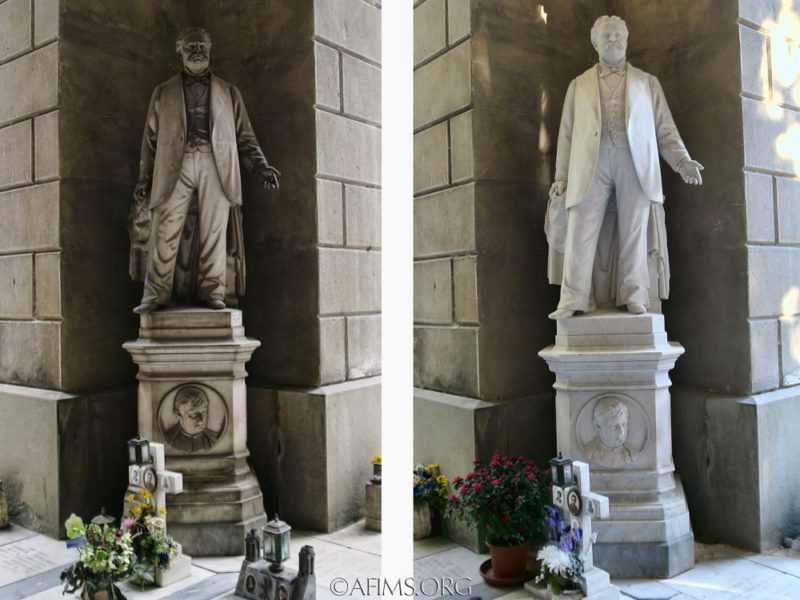Domenico & Giovanni Maino Tomb, 1880
Restored in 2017, the work took two months to complete.
Domenico Carli (1828-1912) blended the realism of late 19th century Italian sculpture with traditional classicism. Carli worked for many years as a student of and assistant to the great Genovese sculptor Santo Varni. Once he established his own studio, he produced numerous works at Staglieno and for churches in Genoa, along with two colossal sculptures for the cathedral in Panama, and works that went to Guatemala, Uruguay and Russia.
The memorial to Domenico and Giovanni Maino is an excellent example of the style of Bourgeois Realism. Domenico, an “honest and zealous businessman” stands atop a tall pedestal. In a departure from Carli’s earlier neo classical work, the figure stands in an informal and very natural pose. Domenico’s brother Giovanni, a priest, is represented in a tondo (round framed format) portrait relief carved in the pedestal.
This sculpture is covered with an uneven dense layer of dirt and black crust, and is in a location of the galleries particularly subject to humidity and winter frost. Black crust is a phenomenon of the deterioration of marble, where the surface of the marble combines with dust and pollution, and breaks down forming a hard crumbly skin on the sculpture. Removal of this dirt and thin crust is essential to protect the sound marble underneath, and to stop further erosion.
Restoration will start with dusting of the entire sculpture, and if necessary consolidation of the most delicate or weakened areas. This will be followed by deeper cleaning either through use of cellulose poultices applied to the surface which draw out the dirt, or by laser cleaning. Inorganic solvents may also be used to dissolve the heaviest staining. Afterwards the surface will be consolidated with a very thin application of a paste of lime or marble dust, or with calcium or ethyl silicate. This protects the surface, bonding it together to preclude further weakening. This may be followed up with application of dilute microcrystalline wax. All work will be supervised by the art historians and restoration specialists of the Soprintendenza Archeologia Belle Arti e Paesaggio, the agency that protects all of Italys artistic treasures. We will carefully document every phase of the work.

